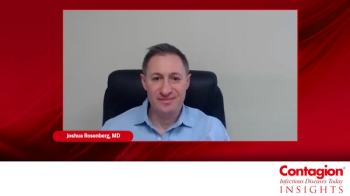
How Can Prevention Initiatives Lead to a Decline in HAIs in Nursing Homes?
Nicola Thompson, PhD, explains how her research can lead to initiatives that aim to result in a decline in the burden of infections in nursing homes.
Nicola Thompson, PhD, epidemiologist, Division of Healthcare Quality Promotion, Centers for Disease Control and Prevention, explains how her research can lead to initiatives that aim to result in a decline in the burden of infections in nursing homes.
Interview Transcript (slightly modified for readability)
“We’re hoping that the information that we’re going to gain from doing this work is going to lead to several different initiatives. One is that we developed the long-term care facility component for the National Healthcare Safety Network, which became available in 2012 and uptake and adoption of that piece of the surveillance structure has been relatively modest, although has increased lately thanks to some initiatives from the Centers for Medicare/Medicaid Services. We would like to add additional reporting components to that infrastructure. Currently, nursing homes can report on urinary tract infections, some multidrug-resistant organisms, and Clostridium difficile, so we would like to add additional pieces to that, but it’s really hard to know what else to add when we don’t understand what the epidemiology of infections is.
I think another piece that was done with the publication in 1990 was kind of being able to shine a light and provide more information about the burden of infections in nursing homes and providing some data that’s going to fill the hole that currently exists and motivating people to be able to understand the need and what the potential benefits are engaging in some of the prevention activities that occur.
I think another piece is really understanding not only the total number, but understanding the types of infections that occur in nursing homes. So, those prevention initiatives can be defined and developed that are data-based and hopefully, over time, if this work is replicated, in a few years from now, we could perhaps see that there might be some decline in the burden of infections and tie that back to many of the prevention initiatives.”
Newsletter
Stay ahead of emerging infectious disease threats with expert insights and breaking research. Subscribe now to get updates delivered straight to your inbox.



















































































































































































































































































